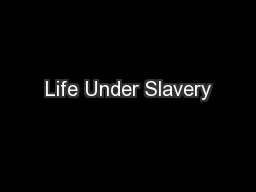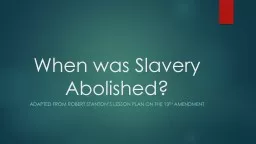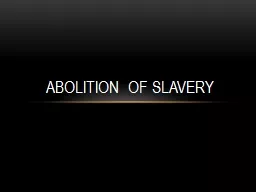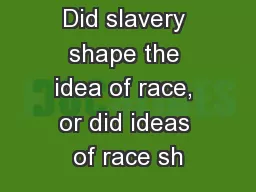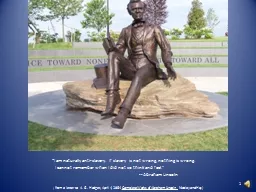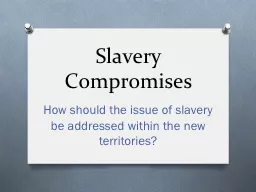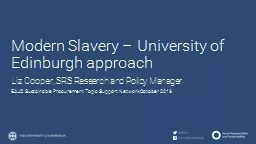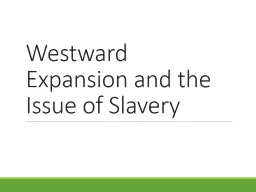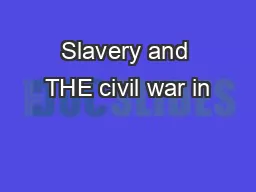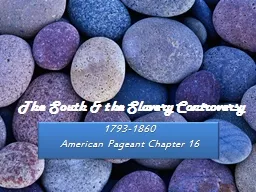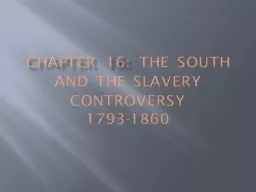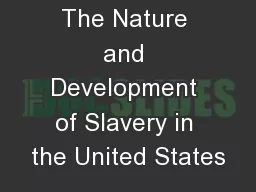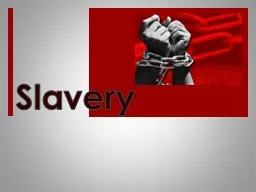PPT-Life Under Slavery
Author : pasty-toler | Published Date : 2015-11-19
18th century most slaves recent arrivals work on small farms By 1830 majority are American work on plantations or large farms Rural Slavery On plantations men women
Presentation Embed Code
Download Presentation
Download Presentation The PPT/PDF document "Life Under Slavery" is the property of its rightful owner. Permission is granted to download and print the materials on this website for personal, non-commercial use only, and to display it on your personal computer provided you do not modify the materials and that you retain all copyright notices contained in the materials. By downloading content from our website, you accept the terms of this agreement.
Life Under Slavery: Transcript
Download Rules Of Document
"Life Under Slavery"The content belongs to its owner. You may download and print it for personal use, without modification, and keep all copyright notices. By downloading, you agree to these terms.
Related Documents

